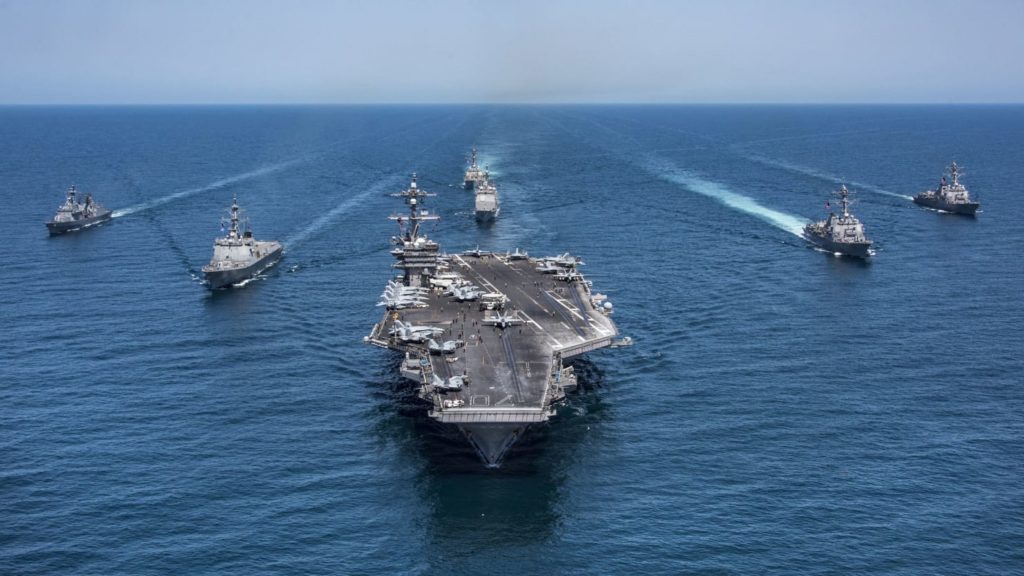On April 5, First Deputy Chief of Russia’s Main Intelligence Directorate (GRU) Igor Kostyukov stated that the US forces deployed in the Asia Pacific Region had exceeded 400,000, initiating the new arm race in the region.
“Presently, there are more than 50 large military bases in the Asia Pacific region and more than 200 US military facilities,” he said.
According to Kostyukov, one of the main US instruments for carrying out foreign policy are carrier strike groups, besides one of them is in Japan.
The most worrisome situation was the demonstration of US military power in November, 2017 during the escalation of tensions with North Korea.
Additionally, the US constantly demonstrates power of its strategic bombers.
“At the Andersen airbase, on the island of Guam, six B-52, B-1 and B-2 bombers are permanently located. There are even 15+ strategic bombers that regularly patrol the airspace over the Pacific Ocean,” Kostyukov said.
The Pentagon has also deployed THAAD anti-missile systems in the Asia Pacific Region.
“At present, the US has deployed 19 ships which have anti-tank missiles, two anti-missile batteries THAAD, three anti-aircraft missile battalions and five mobile radars, and Washington is expanding its cooperation with Japan and the Republic of Korea,” he added.
The present situation around the Korean peninsula is balancing on the brink of a regional war.
“The US White House’s purposeful attempts to undermine the viability of the Kim Jong-un regime and the demonstration of its readiness for the removal of the North Korean leadership through the use of force are pushing Pyongyang towards adventurist steps, which Washington is using to justify the need to build up its military presence in the Asia-Pacific region and deploy global missile shield elements,” Kostyukov stated.
“As a result of this dangerous US policy, the North Korean authorities that have actually been driven to the corner have achieved considerable progress in improving their missile and nuclear potential,” he added.
Kostyukov added Russia doesn’t justify North Korean aspirations, although “there is no alternative to settling the nuclear problem solely by political and diplomatic means”.
The US president’s intention to conclude an deal with the North Korean leader can be confirmed only after their meeting happens. The US “readiness” to negotiate is still not confirmed by actions.
The growing US military presence in the Asia Pacific could lead to a military escalation.






